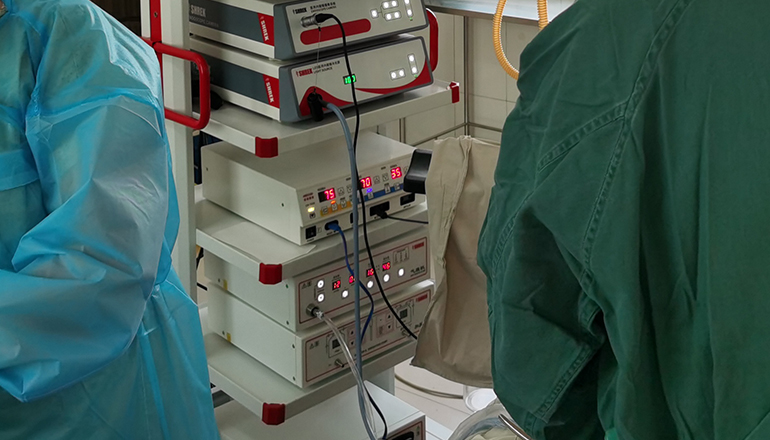- Shanghai, China
- [email protected]
- +86-21-58189111
High-frequency electrotomes are commonly used in gynecological surgeries, including hysteroscopic surgery. These instruments use high-frequency electrical current to cut and coagulate tissues, providing precise surgical control and reducing bleeding. Here are some of the roles of high-frequency electrotomes in hysteroscopic surgery:
Tissue removal
The high-frequency electrotome is used in hysteroscopic surgery to remove tissue, such as polyps, fibroids, or adhesions. The electrotome can make precise cuts and coagulate the surrounding tissues, reducing bleeding and minimizing the risk of injury to the uterus or surrounding tissues.
Hemostasis
One of the primary advantages of the high-frequency electrotome is its ability to provide hemostasis, or control bleeding. The electrotome's electrical current can coagulate blood vessels as it cuts, reducing blood loss and providing a clear surgical field for the surgeon. This can be especially important in hysteroscopic surgery, where the uterus is a highly vascularized organ.
Thermal control
The high-frequency electrotome can also provide thermal control during hysteroscopic surgery. The electrotome's electrical current can generate heat, which can be used to remove tissue or cauterize blood vessels. However, if the heat generated is excessive, it can cause thermal injury to the uterus or surrounding tissues. Therefore, skilled surgeons must use the electrotome with precision and control to avoid complications.

Versatility
The high-frequency electrotome is a versatile instrument that can be used for a variety of surgical procedures in hysteroscopic surgery. It can be used to remove tissue, control bleeding, and provide thermal control, making it a valuable tool for a range of surgical applications.
Reduced risk of complications
The high-frequency electrotome can help reduce the risk of complications associated with traditional surgical techniques, such as bleeding or tissue damage. By providing precise surgical control and reducing blood loss, the electrotome can help ensure a safer and more successful surgical outcome.
In conclusion, the high-frequency electrotome is a valuable tool in hysteroscopic surgery, providing precision tissue removal, hemostasis, thermal control, versatility, and reduced risk of complications. However, as with any surgical instrument, its use requires specialized training and expertise to minimize the risk of complications and ensure the best possible outcome for the patient. Skilled surgical teams with the proper training and experience can utilize the high-frequency electrotome effectively, providing the best possible care for patients undergoing hysteroscopic surgery.
It is important to note that while the high-frequency electrotome is a useful tool, it also carries some risks. The instrument generates heat, which can cause thermal injury to the uterus or surrounding tissues if not used properly. In addition, the electrical current can cause electrical burns or interfere with other medical devices if not managed correctly. Thus, it is important for the surgical team to follow proper safety protocols and carefully monitor the patient's vital signs and tissue response during the procedure.
In summary, the high-frequency electrotome is an essential tool in hysteroscopic surgery, providing precise surgical control and reducing the risk of complications. Its ability to remove tissue, provide hemostasis, and offer thermal control makes it a valuable instrument for skilled surgeons. However, its use requires specialized training and expertise, and the surgical team must follow proper safety protocols to minimize the risk of complications and ensure the best possible outcome for the patient.
Leave a Comments